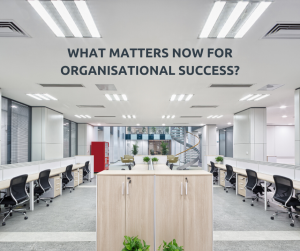
There is an intense awareness of change perched on the shoulder of Australia’s workforce right now. For many employers and employees, it is overwhelming. Here’s how to stand firm in the face of uncertainty.
The gut feeling of uncertainty is the new norm and affecting every single person of working age. Even the PwC’s 23rd Annual Global CEO Survey aptly titled: Navigating the rising tide of uncertainty, is reporting a record level of pessimism in CEOs.
But here’s the thing about pessimism – it can make better leaders, particularly where there is a need to ignite social change. Further, it’s considered that having realistic expectations or even better, moderate optimism with a daily dose of pessimism, may actually be the recipe for good health and happiness.
Note that shift in mindset? Here’s another.
- 80% of Australia’s CEOs are concerned about economic growth in 2020
- 78% of CEOs see key skills as a top threat to growth.
These two points sitting side by side as part of the PwC data tell how Australian CEOs might be feeling right now but it also shows the opportunity available to futureproof your workplace and career.
You Can Futureproof in Times of Uncertainty
Companies can:
> Review the values and purpose of the organisation with every person who has a vested interest in the success and wellbeing of your company and brand – employees, customers, shareholders and the community.
> Develop trust. Developing trust again with every person who has a vested interest in the success and wellbeing of your company and brand is essential for businesses and employers right now.
How can you attract or retain top talent if you can not show that you care for what matters to them?
Are you offering
- A means of support for the feelings of uncertainty and overwhelm – within teams and individually? Message me if you need help with this.
- Group problem-solving?
- Opportunities to learn by making mistakes?
- Flexible career opportunities for employees?
- Skill development?
- Ways for greater team alignment (meetings, coaching, professional development).
- Opportunities to develop leadership at all levels?
- A culture of listening and drawing out the needs and ideas of your employees?
- Full support and care in outplacement when tough decisions like retrenchment have to be made?
Here’s something I shared on leadership in a crisis and why trust must be a focus of leadership right now. You’ll find some excellent links that go deeper on trust here too.
> Review every role at every level. Remember that 78% of CEOs see key skills as a top threat to growth stat? This relates to the mismatched or underdeveloped skills and hidden talents of your people to enable growth.
It’s time to review every person’s actual abilities rather than their role. It is time to discover what opportunities there are right under your nose with a little development.
Your people want and need this and so does your organisation. And even better, they want to learn. According to PWC research: ‘69% of adults are prepared to learn new skills or completely retrain in order to improve their future employability (this figure jumps to 77% among 18–34 year-olds)’.
> Retrain, Reskill, Upskill. Financial and economic forecasts may be at the front of your mind at the moment but not Retraining, Reskilling and Upskilling is something you can’t afford.

I recently shared about a Gartner webinar I sat on discussing business impacts from Coronavirus, cost optimisation, and the top priorities for Human Resources. The key message was similar to PWC’s: yes, the outlook is sobering but there are solid opportunities to strengthen financially, fiscally and economically with the right tools and skillsets in place and matched with the right mindsets.
> Rethink the models for growth and development. Leadership has traditionally driven skills within divisions. Opportunities to innovate and improve agility and growth then become limited to a few sources rather than understanding what skills exist elsewhere within the org.
To help generate more opportunities for growth organisations need to not only review roles and abilities but open the opportunities to develop with individual-focused, employee-led development – after all, they are the ones who know their strengths and skill gaps better than anyone else.
Tip: To promote this, commit to ongoing development, to a culture of learning and leadership at all levels. (contact us, our virtual coaching program can help.)
Bottom line
We may not know exactly what the future of work looks like but if we take action like a confident surfer, backed with the right tools (technology), the right skill set (especially the transferable/agile ones like management, leadership, communication), and the right mindsets, we have the best possible chance of riding whatever wave comes at us.
You can futureproof in times of uncertainty. You can grow and develop and be ready – and we support you as there is a great deal to be done.







No comment yet, add your voice below!